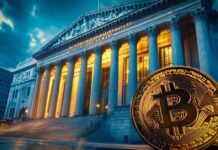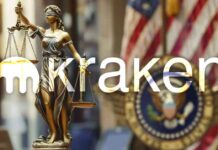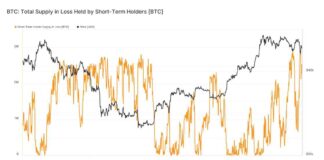Apologize and try to explain how the sinking could have happened. Sam Bankman-Fried, the former boss of now-bankrupt cryptocurrency exchange FTX, said he was “deeply sorry for what happened at a New York Times conference.” has passed “.
“I was the general manager of FTX, which means that whatever happened, I had an obligation to safeguard the interests of shareholders and customers,” admitted the ex-executive during his first public interview since. the failure of society.
Caught in a wave of panic that had prompted users to attempt to withdraw their funds from the platform en masse, FTX first suspended withdrawals, before being forced into bankruptcy on November 11.
“I clearly made a lot of mistakes, things I would give anything to correct today,” the 30-something continued, dressed in his usual dark t-shirt.
Sam Bankman-Fried is suspected of having used, together with collaborators, funds deposited on the platform by FTX clients to carry out speculative financial transactions with his other company, Alameda Research. If proven, these facts could lead to criminal prosecution.
More than a billion dollars not found
According to the Wall Street Journal, at the time of the bankruptcy filing, the sums taken, without express authorization, by Alameda and coming from FTX client accounts reached approximately 10 billion dollars (approximately 9.6 million euros). Several American media have reported that more than a billion dollars of this total is today untraceable.
“I did not seek to commit fraud against anyone,” the entrepreneur assured. “I did not try to mix funds” and use money belonging to clients to make risky investments without their knowledge, insisted Sam Bankman-Fried, in video duplex from the Bahamas, where FTX is headquartered and where it still resides.
During the interview, Sam Bankman-Fried appeared overwhelmed by events and seemed to have only a very partial view of the underside of FTX’s failure. “I didn’t run Alameda,” he said, even though he was the main shareholder. “I did not know the size of their position”, that is to say the sum borrowed from FTX, assured this graduate in physics from the prestigious Massachusetts Institute of Technology (MIT).
Sam Bankman-Fried’s successor, John Ray III, in mid-November castigated the management of FTX and described a centrally controlled company “in the hands of a very small group of inexperienced, unsophisticated and potentially corrupt individuals. “. This is an “unprecedented” case, added Mr. Ray, who has in the past presided over the ordering of several large bankrupt groups, including the energy broker Enron, often considered a reference in the matter.
His lawyers advise him not to speak
Asked about a possible court appearance, Sam Bankman-Fried said he was “not focusing on it”, adding that his lawyers had advised him not to speak publicly. He said he was more interested in “trying to do everything [his] possible to help” the platform’s investors and customers.
By far the most prominent personality in the world of cryptocurrencies, Sam Bankman-Fried embodied for some the future of the sector, especially since he said he was in favor of more regulation. A time credited with a fortune estimated at 26 billion dollars, entirely based on the valuation of FTX and Alameda, the young man lost everything with the bankruptcy of his platform.
“A lot of what we were doing was a distraction,” which took us away from an “incredibly important topic, one that we totally failed on: risk,” admitted Sam Bankman-Fried. “Risk management, risks related to client investments or conflicts of interest,” he detailed.
The FTX setbacks have brutally shaken the cryptocurrency universe and caused several platforms to suspend customer withdrawals. On Monday, cryptocurrency lending specialist BlockFi announced its bankruptcy filing.
The sequence brought to light, like the one that followed, in the spring, the implosion of the digital currency Terra, the interconnection of a number of platforms, which lent themselves to each other often without sufficient guarantees.














